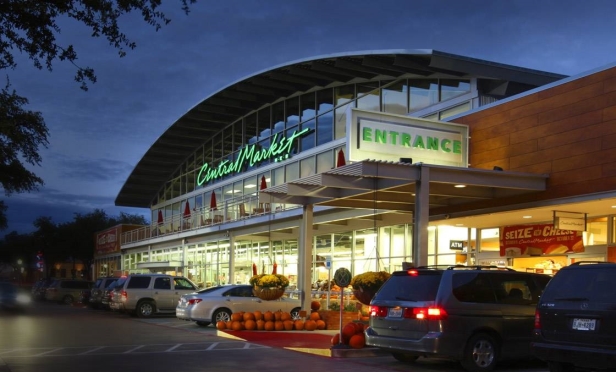 Preston Oaks Center is an example of the grocery-anchored site that retains popularity (credit: Regency Centers).
Preston Oaks Center is an example of the grocery-anchored site that retains popularity (credit: Regency Centers).
DALLAS/FORT WORTH—DFW retail occupancy is at or near capacity, according to Weitzman's recent retail report. The report divides the metroplex into 42 retail submarkets. In 2019, a record 36 submarkets reported strong occupancy above 90%.
In contrast, only 17 submarkets reported occupancy that reached or exceeded that level a decade ago. In the past, there would be booming new-growth submarkets in Collin County or North Fort Worth at 95%–while at the same time, long-established urban markets and outmoded retail centers were lucky to break 85%, the report observes.
Today's market switch stems from the fact that DFW leads the country in new multifamily units with nearly 140,000 new units since 2010, according to CoStar. That market-wide residential growth has created retail demand and boosted existing retail centers.
And, DFW's current occupancy strength is also reflected in all retail categories that Weitzman tracks. For the first time in its survey's 45-year history, every category reports occupancy above 90%. Surprisingly, malls climbed to 90.6% occupancy with a number of anchor leases, but this can be attributed to the fact that not a single lease was for a traditional mall anchor user.
And, for only the second time in its survey history, neighborhood centers reported occupancy above 90%. This improvement for these smaller strip centers can be attributed to built-out submarkets getting new growth in residents and incomes, thanks in part to the multifamily boom.
This new residential drives retail demand, and owners of existing centers are renovating older centers accordingly. Weitzman, for example, is renovating 14 centers with a program it calls "life-styling the strip center". This renovation approach adds pedestrian-friendly elements such as green space, patios, seating areas, arbors and the like. Weitzman says those elements are required to attract small-shop tenants.
During 2019, despite DFW's tight retail market in the midst of the country's best economy, there was a decline in new space. New and expanded retail centers totaled only 1.8 million square feet, compared to 3.5 million square feet in 2018, says Weitzman. The decline reflects a trend of limited anchor expansions, existing project renovations and redevelopments, diligent lending standards, the rise of construction costs and smaller retail projects.
Regarding the smaller center trend, the average size for a new retail project was 64,600 square feet last year. A decade earlier, the average new center was almost twice as large at 124,300 square feet, says Weitzman.
This construction slowdown also reflects the market's success at reshaping and repurposing existing retail. Construction is a tracking metric for how the market is performing and during the past decade, the DFW market has self-regulated. This measured construction prevents the overbuilding for which DFW was once known, Weitzman observes.
To show how dramatic the construction slowdown has been, the report took a look at the most recent decade and compared it to the previous decade. From 2000 to 2009, DFW added a total of 47 million square feet of new retail space. From 2010 to 2019, the market added 22.6 million square feet.
Not only is construction down, but so is gross leasing area per capita. In 2009, DFW was known as one of the most over-retailed markets in the country with per capita GLA of 28 square feet. Today, that GLA has dropped to 26.7 GLA per capita, which is in line with national averages.
This low-construction environment means that a lot of retail demand is driven to existing retail centers.
That's a big reason why net leasing absorbed more than 1.8 million square feet last year. The ICSC Red River Conference held earlier this month kept this theme at the forefront.
"Our team had an opportunity to meet with real estate investors, developers and institutional owners of single- and multi-tenant retail assets. As we've seen in the past several years, the number of large-scale retail projects are few and far between, however the supply is plentiful for value-added projects, strip center and single-tenant net lease developments with growing tenants," Daniel Herrold, senior director at Stan Johnson Company, tells GlobeSt.com.
Herrold said capital is somewhat in a holding pattern, although evaluating more creative approaches rather than waiting for supply to catch up.
"The investor appetite remains robust and strong, but there is more capital on the sidelines than the amount of supply available," Herrold tells GlobeSt.com. "Many developers who have long histories of creating shopping centers are now looking for value added or distressed properties in order to deploy capital. Private equity funds and institutional money continues to chase stabilized and value-added properties in healthy primary, secondary and even tertiary markets."
© Touchpoint Markets, All Rights Reserved. Request academic re-use from www.copyright.com. All other uses, submit a request to [email protected]. For more inforrmation visit Asset & Logo Licensing.







